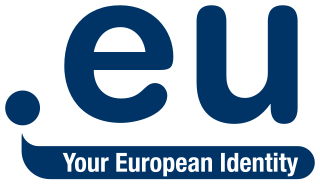This article needs additional citations for verification .(October 2014) |
Domain drop catching, also known as domain sniping, is the practice of registering a domain name once registration has lapsed, immediately after expiry.
This article needs additional citations for verification .(October 2014) |
Domain drop catching, also known as domain sniping, is the practice of registering a domain name once registration has lapsed, immediately after expiry.
When a domain is first registered, the customer is usually given the option of registering the domain for one year or longer, with automatic renewal as a possible option. [1] Although some domain registrars often make multiple attempts to notify a registrant of a domain name's impending expiration, a failure on the part of the original registrant to provide the registrar with accurate contact information makes an unintended registration lapse possible. Practices also vary, and registrars are not required to notify customers of impending expiration. [1] Unless the original registrant holds a trademark or other legal entitlement to the name, they are often left without any form of recourse in getting their domain name back. It is incumbent on registrants to be proactive in managing their name registrations and to be good stewards of their domain names. By law there are no perpetual rights to domain names after payment of registration fees lapses, aside from trademark rights granted by common law or statute.
The Redemption Grace Period is an addition to ICANN's Registrar Accreditation Agreement (RAA) [2] which allows a registrant to reclaim their domain name for a number of days after it has expired. [3] This length of time varies by TLD, and is usually around 30 to 90 days. [3] Prior to the implementation of the RGP by ICANN, individuals could easily engage in domain sniping to extort money from the original registrant to buy their domain name back.
After the period between the domain's expiry date and the beginning of the RGP, the domain's status changes to "redemption period" during which an owner may be required to pay a fee (typically around US$100) [4] to re-activate and re-register the domain. [5] ICANN's RAA requires registrars to delete domain registrations once a second notice has been given and the RGP has elapsed. At the end of the "pending delete" phase of 5 days, the domain will be dropped from the ICANN database. [5]
For particularly popular domain names, there are often multiple parties anticipating the expiration. Competition for expiring domain names has since become a purview of drop catching services. These services offer to dedicate their servers to securing a domain name upon its availability, usually at an auction price. [5] Individuals with their limited resources find it difficult to compete with these drop catching firms for highly desirable domain names. [5]
Retail registrars such as GoDaddy or eNom retain names for auction through services such as TDNAM or Snapnames through a practice known as domain warehousing. [6] Drop catch services are performed by both ICANN-accredited registrars and non-accredited registrars.
Some registry operators (for example dot-РФ, dot-PL, dot-RU, dot-ST, dot-TM, dot-NO) offer a service by which a back-order (also sometimes known as a "domain future" or "domain option") can be placed on a domain name.
If a domain name is due to return to the open market, then the owner of the back-order will be given the first opportunity to acquire the domain name before the name is deleted and is open to a free-for-all. In this way back-orders will usually take precedence over drop-catch.
There may be a fee for the back-order itself, often only one back-order can be placed per domain name and a further purchase or renewal fee may be applicable if the back-order succeeds.
Back-Orders typically expire in the same way domain names do, so are purchased for a specific number of years.
Different operators have different rules. In some cases back-orders can only be placed at certain times, for example after the domain name has expired, but before it has returned to the open market (see Redemption Grace Period).
In the Commodity market sense, a back-order is often more like an "option" than a "future" as there is often no obligation for the new registrant to take the name, even after it has been handed to the owner of the back-order. For example, some registries give the new registrant 30 days to purchase a renewal on the name before it is once again returned to the open market (or any new back-order registrant).

In the Internet, a domain name is a string that identifies a realm of administrative autonomy, authority or control. Domain names are often used to identify services provided through the Internet, such as websites, email services and more. Domain names are used in various networking contexts and for application-specific naming and addressing purposes. In general, a domain name identifies a network domain or an Internet Protocol (IP) resource, such as a personal computer used to access the Internet, or a server computer.
The domain com is a top-level domain (TLD) in the Domain Name System (DNS) of the Internet. Created in the first group of Internet domains at the beginning of 1985, its name is derived from the word commercial, indicating its original intended purpose for subdomains registered by commercial organizations. Later, the domain opened for general purposes.

.eu is the country code top-level domain (ccTLD) for the European Union (EU). Launched on 7 December 2005, the domain is available for any person, company or organization based in the European Union. This was extended to the European Economic Area in 2014, after the regulation was incorporated into the EEA Agreement, and hence is also available for any person, company or organization based in Iceland, Liechtenstein and Norway. The TLD is administered by EURid, a consortium originally consisting of the national ccTLD registry operators of Belgium, Sweden, and Italy, joined later by the national registry operator of the Czech Republic. Trademark owners were able to submit registrations through a sunrise period, in an effort to prevent cybersquatting. Full registration started on 7 April 2006.
A domain name registrar is a company that manages the reservation of Internet domain names. A domain name registrar must be accredited by a generic top-level domain (gTLD) registry or a country code top-level domain (ccTLD) registry. A registrar operates in accordance with the guidelines of the designated domain name registries.
Domain name scams are types of Intellectual property scams or confidence scams in which unscrupulous domain name registrars attempt to generate revenue by tricking businesses into buying, selling, listing or converting a domain name. The Office of Fair Trading in the United Kingdom has outlined two types of domain name scams which are "Domain name registration scams" and "Domain name renewal scams".
Domain name speculation, popular as domaining in professional jargon, is the practice of identifying and registering or acquiring generic Internet domain names as an investment with the intent of selling them later for a profit.

The domain name net is a generic top-level domain (gTLD) used in the Domain Name System of the Internet. The name is derived from the word network, indicating it was originally intended for organizations involved in networking technologies, such as Internet service providers and other infrastructure companies. However, there are no official restrictions and the domain is now a general-purpose namespace. It is still popular with network operators and the advertising sector, and it is often treated as a better alternative to .com.

.ee is the internet country code top-level domain (ccTLD) of Estonia, operated by the Estonian Internet Foundation.

.ae is the country code top-level domain (ccTLD) in the Domain Name System of the Internet for the United Arab Emirates. It is administered by .aeDA which is part of the Telecommunications and Digital Government Regulatory Authority of UAE (TDRA).

.aero is a sponsored top-level domain (sTLD) used in the Domain Name System of the Internet. It is the first sponsored top-level domain based on a single industrial theme. The aero domain is reserved for companies, organizations, associations, government agencies, and individuals in aerospace-related fields. It was created in 2002 and is operated by SITA. SITA created and operates the Dot Aero Council.

.uz is the Internet country code top-level domain (ccTLD) for Uzbekistan. Registry services were formerly operated by Euracom GmBH, but were later redelegated to UZINFOCOM. Registrations are taken directly at the second level, but the former registry also advertised the availability of registrations at the third level beneath co.uz and com.uz, and some domain names under other second-level names such as org.uz also exist.
The Uniform Domain-Name Dispute-Resolution Policy (UDRP) is a process established by the Internet Corporation for Assigned Names and Numbers (ICANN) for the resolution of disputes regarding the registration of internet domain names. The UDRP currently applies to all generic top level domains, some country code top-level domains, and to all new generic top-level domains.

.ph is the Internet country code top-level domain (ccTLD) for the Philippines.
A drop registrar is a domain name registrar who registers expiring Internet domain names immediately after they expire and are deleted by the domain name registry. A drop registrar will typically use automated software to send up to 250 simultaneous domain name registration requests in an attempt to register the domain name first. In recognition of the potential abuse of such a "domain land rush", ICANN and VeriSign limited the number of simultaneous requests to 250 since July 17, 2001.
Domain name warehousing is the practice of registrars obtaining control of expired domain names already under their management, with the intent to hold or "warehouse" names for their own use and/or profit.
RegisterFly was a New Jersey (U.S.) based internet hosting and domain name registrar that had their ICANN-accredited status terminated in March 2007.
Domain tasting is the practice of temporarily registering a domain under the five-day Add Grace Period at the beginning of the registration of an ICANN-regulated second-level domain. During this period, a registration must be fully refunded by the domain name registry if cancelled. This was designed to address accidental registrations, but domain tasters have used the practice for illicit purposes.
A landrush period is the time during which domain names are available for registration, usually to a closed group, to entities that do not own a trademark in the name they wish to register, for example generic terms like loan or car, and thus would not qualify for registration during the sunrise period. Orders may or may not be treated on a first-come-first-served basis. This period follows the sunrise period just after the launch of a new top-level domain or second-level domain during which, for example, owners of trademarks may register a domain name containing the owned mark, but a landrush period precedes a period of general availability, when any qualifying entity can register any name on a first come first-served basis.
Domain registration is the process of acquiring a domain name from a domain name registrar.
The Registration Data Access Protocol (RDAP) is a computer network communications protocol standardized by a working group at the Internet Engineering Task Force in 2015, after experimental developments and thorough discussions. It is a successor to the WHOIS protocol, used to look up relevant registration data from such Internet resources as domain names, IP addresses, and autonomous system numbers.